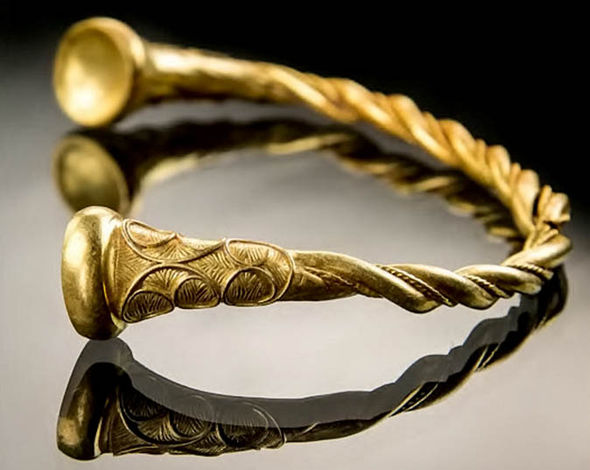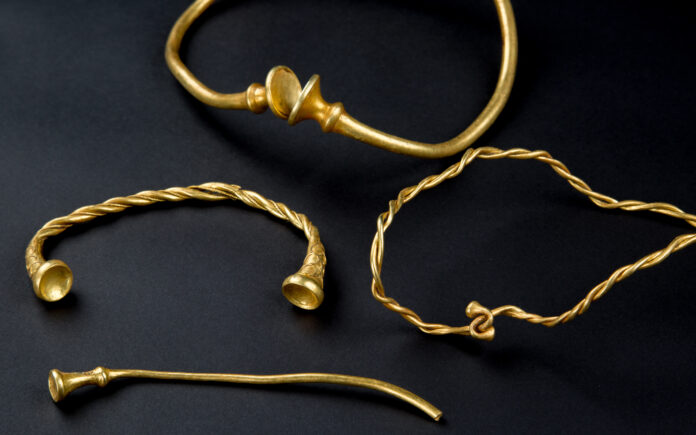In December 2016, an extraordinary discovery was made on a quiet stretch of farmland in the parish of Leekfrith, nestled in the Staffordshire Moorlands. Unearthed from the soil just before Christmas, a collection of four ancient torcs—three necklaces and one bracelet—came to light. These pieces, known as the Leekfrith Iron Age Torcs, have been hailed as possibly the oldest Iron Age gold ever found in Britain. With a history dating back approximately 2,500 years, the significance of this find offers an invaluable glimpse into life in Iron Age Britain.
Discovery of the Leekfrith Torcs

The torcs were discovered by lifelong friends Mark Hambleton and Joe Kania, who had taken up metal detecting as a hobby. The four pieces were found separately, each buried just beneath the surface and spaced about one meter apart. The find was made on farmland owned by a local family, who now share in the excitement of this remarkable discovery.
Ancient Origins and Craftsmanship

Experts believe the Leekfrith Torcs were crafted in the third or fourth century BC, placing their origins in Europe—likely in what is now Germany or France. The torcs were likely worn by wealthy and powerful women, possibly of continental origin who had integrated into the local community. The intricate decoration on the bracelet, in particular, is thought to represent some of the earliest Celtic art found in Britain, showcasing the advanced craftsmanship of the era.
The Mystery Behind the Burial
The exact reason why these precious items were buried remains a mystery. Scholars speculate that the torcs could have been hidden for safekeeping, offered as a tribute to the gods, or buried in remembrance of their deceased owner. The significance of their careful placement hints at a ritualistic or deeply personal motive behind their burial.
Significance of the Find

Dr. Julia Farley, curator of British & European Iron Age collections for the British Museum, emphasized the international importance of the discovery. She noted, “This unique find is of international importance. It dates to around 400-250 BC, and is probably the earliest Iron Age gold work ever discovered in Britain.” The Leekfrith Torcs not only provide a tangible connection to the past but also open new avenues for understanding the social and cultural dynamics of Iron Age Britain.
The Future of the Leekfrith Torcs

Following the discovery, Staffordshire County Council leader Philip Atkins expressed the pride and excitement shared by the community. He remarked, “As a county and as a council we are both proud and unbelievably lucky to be home to some truly exceptional finds, including of course the Staffordshire Hoard of Anglo-Saxon gold. This amazing find of gold torcs in the north of the county is quite simply magical and we look forward to sharing the secrets and story they hold in the years to come.”
Conclusion
The discovery of the Leekfrith Iron Age Torcs is a reminder of the rich and layered history hidden beneath our feet. These ancient pieces of jewellery not only represent a significant archaeological find but also provide a unique window into the lives of those who lived in Britain over two millennia ago. As research continues, the Leekfrith Torcs will undoubtedly reveal more about their mysterious past and the world in which they were created.
